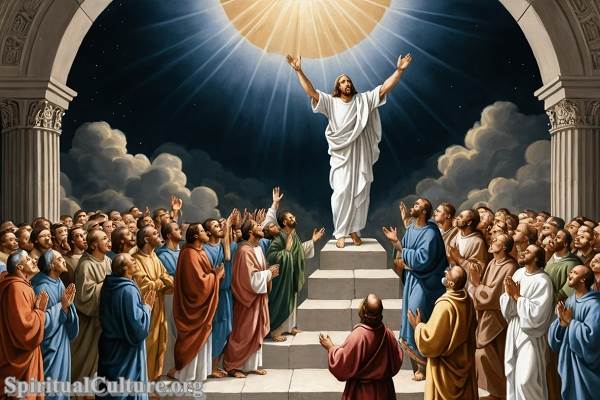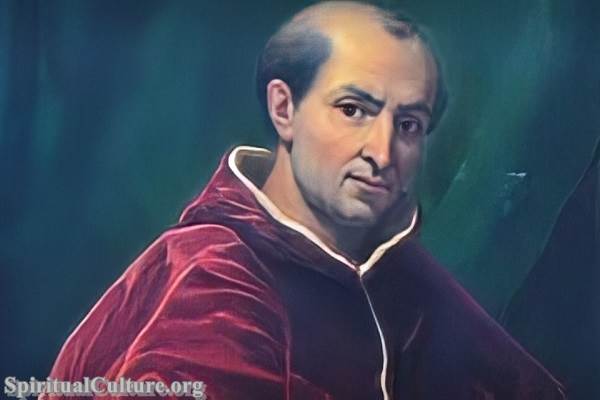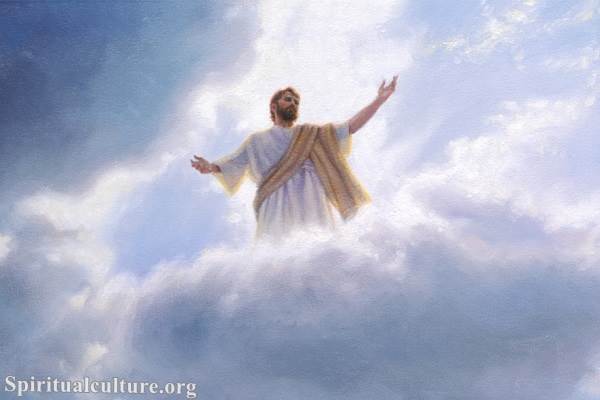Ascension Day is one of the most significant yet often overlooked Christian holy days. Celebrated 40 days after Easter, this feast marks the ascension of Jesus Christ into heaven, as witnessed by his disciples. It is a cornerstone of Christian theology, symbolizing the completion of Jesus’ earthly mission, his glorification, and the promise of his eventual return.
This comprehensive article explores the history, theological importance, global traditions, and evolving practices of Ascension Day. By diving into its biblical foundation, cultural expressions, and ongoing relevance, we aim to shed light on the depth and richness of this special day in the Christian liturgical calendar.
Understanding Ascension Day
What is Ascension Day?
Ascension Day, also known as the Feast of the Ascension, is a Christian observance dedicated to the event when Jesus Christ ascended into heaven. It signifies Jesus’ transition from his earthly ministry to his eternal reign.

This holy day falls exactly 40 days after Easter Sunday, which is why it is typically observed on a Thursday. However, some denominations may celebrate it on the following Sunday to accommodate worshippers.
Biblical Foundation
The ascension of Jesus is described in three primary New Testament passages:
- Luke 24:50-53:
“When he had led them out to the vicinity of Bethany, he lifted up his hands and blessed them. While he was blessing them, he left them and was taken up into heaven. Then they worshiped him and returned to Jerusalem with great joy.”
- Acts 1:9-11:
“After he said this, he was taken up before their very eyes, and a cloud hid him from their sight. They were looking intently up into the sky as he was going when suddenly two men dressed in white stood beside them. ‘Men of Galilee,’ they said, ‘why do you stand here looking into the sky? This same Jesus, who has been taken from you into heaven, will come back in the same way you have seen him go into heaven.'”
- Mark 16:19:
“After the Lord Jesus had spoken to them, he was taken up into heaven and he sat at the right hand of God.”
These passages collectively highlight the physical, visible, and glorious nature of Jesus’ ascension, forming the theological backbone of Ascension Day.
Theological Significance of Ascension Day
Ascension Day is more than a commemoration of Jesus’ departure from Earth; it is a profound theological event that carries multiple layers of meaning for Christians.
1. Completion of Earthly Mission
The ascension marks the culmination of Jesus’ work on Earth. His life, death, and resurrection were fulfilled, and his ascension underscores the divine approval of his mission.
2. Christ’s Exaltation
The ascension signifies Jesus’ exaltation to a position of power and glory. Sitting at the right hand of God, he reigns as the eternal King and High Priest. This is a cornerstone of Christian faith, as it reaffirms his authority over heaven and Earth.
3. Promise of the Holy Spirit
Before his ascension, Jesus assured his disciples that he would send the Holy Spirit to guide and empower them. This promise was fulfilled on Pentecost, 10 days after Ascension Day, and marked the birth of the Christian Church.
4. Intercession for Believers
In his exalted state, Jesus acts as a mediator between humanity and God. His ascension assures believers of his ongoing intercession and advocacy on their behalf.
5. Hope of the Second Coming
The angels in Acts 1:11 emphasize the promise of Christ’s return. The ascension is a reminder that Jesus will come again, bringing ultimate redemption and restoration.
Historical Development of Ascension Day
Early Observance
The celebration of Ascension Day can be traced back to the earliest Christian communities:
- Apostolic Times: The disciples and early Christians likely marked the ascension informally through prayer and remembrance.
- 4th Century: By this time, Ascension Day was firmly established in the Christian liturgical calendar. St. Augustine and St. John Chrysostom referenced it as a vital feast.
Medieval Period
During the Middle Ages, Ascension Day grew in prominence, especially in Western Christianity. Elaborate rituals, including processions and symbolic reenactments of Christ’s ascension, became common.
Reformation and Beyond
The Protestant Reformation brought varying approaches to Ascension Day. While some Protestant traditions continued to observe the day with traditional liturgies, others, such as Puritans, downplayed its significance.
Global Celebrations of Ascension Day
Liturgical Practices
Ascension Day services often include readings from scripture, hymns, prayers, and sermons that reflect on the meaning of Jesus’ ascension.
- Catholic and Orthodox Traditions: High Masses, processions, and the elevation of the Paschal Candle are common.
- Protestant Traditions: Many services focus on the theological implications of the ascension and its role in the Christian hope.
Unique Customs Around the World
- Germany:
- Ascension Day (Himmelfahrtstag) is a public holiday. In addition to church services, it coincides with Father’s Day, celebrated with outings and feasts.
- Indonesia:
- As a predominantly Muslim country, Indonesia still recognizes Ascension Day as a public holiday due to its Christian minority. Church services and family gatherings are customary.
- France:
- Ascension Day is marked by processions, often to historic pilgrimage sites.
- Ethiopia:
- Known as Arsema, Ethiopian Christians commemorate the day with fasting, prayer, and traditional feasts.
Modern Innovations
- In the digital age, many churches now livestream Ascension Day services, allowing participation from anywhere in the world.
Ascension Day Symbols and Traditions
Symbols of the Ascension
- Clouds: Represent Jesus’ heavenly journey.
- The Cross: Elevated or adorned to signify Christ’s triumph.
- Candles: Symbolize Christ as the light of the world ascending to his glory.
Traditional Foods
- In some cultures, special meals are prepared to mark the day. For example, in parts of Europe, breads and pastries shaped like doves are popular.
Ascension Day in Art and Music
The theme of Christ’s ascension has inspired countless works of art and music over the centuries.
Iconography
- Renaissance Art: Artists like Giotto and Raphael depicted the ascension in magnificent frescoes and altarpieces.
- Eastern Orthodox Icons: Ascension icons are rich in symbolism, often featuring Christ in a mandorla (an almond-shaped aura).
Hymns and Music
- Ascension Day hymns like “Hail the Day That Sees Him Rise” and “Alleluia! Sing to Jesus” capture the spiritual joy of the feast.
- Classical composers such as Johann Sebastian Bach have written cantatas specifically for Ascension Day.
Relevance of Ascension Day in Modern Times
Challenges
In increasingly secular societies, Ascension Day has lost prominence compared to Easter and Christmas. In some regions, it is no longer recognized as a public holiday.
Renewed Interest
However, many churches are working to revive interest in Ascension Day by emphasizing its theological importance and incorporating contemporary worship elements.
Personal Reflection
For individual Christians, Ascension Day offers an opportunity to reflect on Christ’s mission, his heavenly reign, and the promise of eternal life.
FAQs About Ascension Day
1. Why is Ascension Day always on a Thursday?
The 40-day timeline after Easter places Ascension Day on a Thursday, following the biblical account of Jesus’ ascension.
2. What is the significance of the cloud in the Ascension story?
The cloud represents God’s divine presence and glory, often associated with heavenly encounters in the Bible.
3. How is Ascension Day connected to Pentecost?
Ascension Day paves the way for Pentecost, marking the period of waiting for the Holy Spirit as promised by Jesus.
Conclusion: The Lasting Impact of Ascension Day
Ascension Day remains a profound celebration of Jesus Christ’s victory, reign, and promise. It challenges Christians to look heavenward, both in gratitude for the completed work of Christ and in anticipation of his glorious return.
Whether observed through grand liturgies, personal prayer, or cultural traditions, Ascension Day is a timeless reminder of hope, faith, and the eternal reign of Christ.


